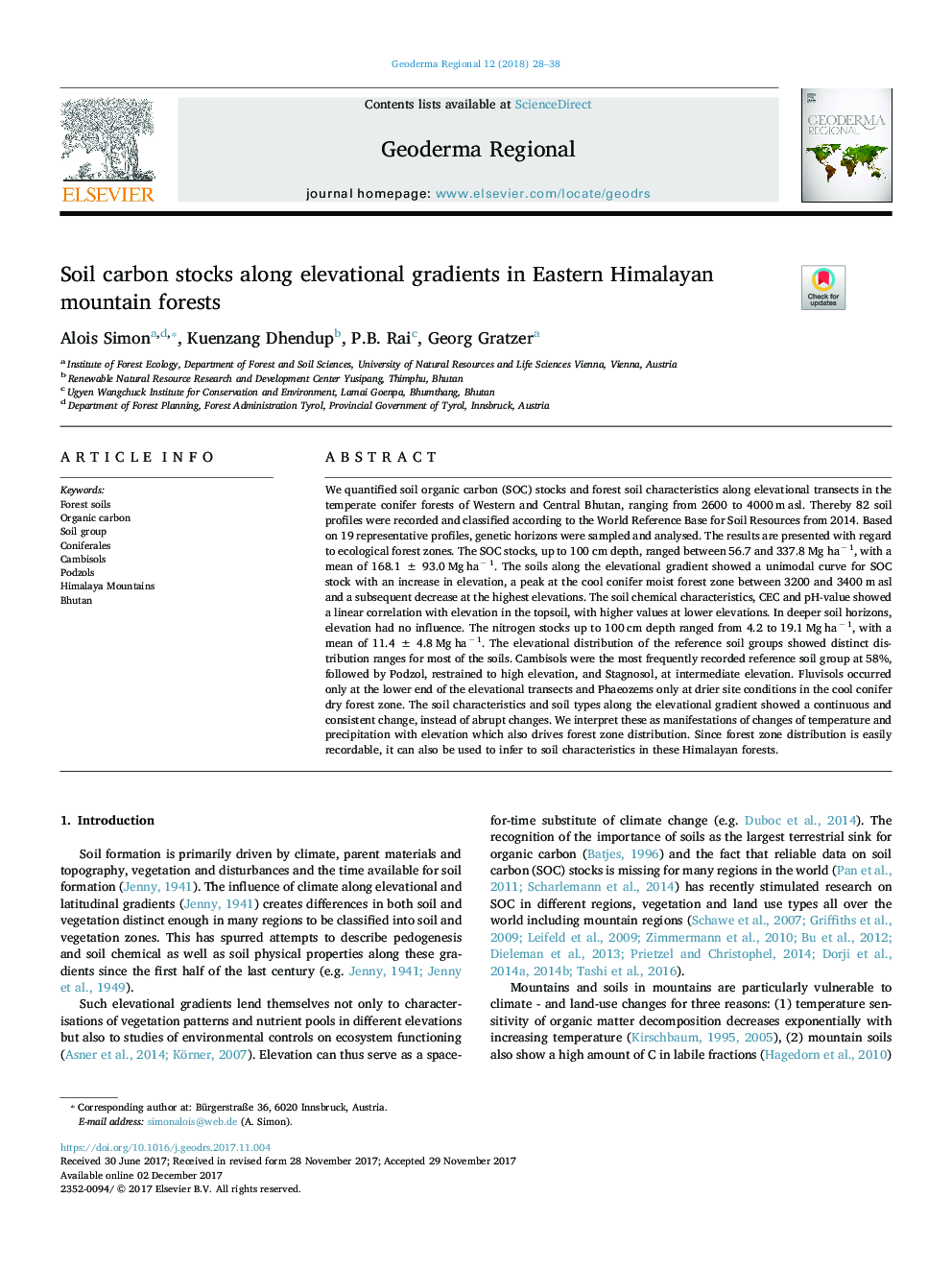| کد مقاله | کد نشریه | سال انتشار | مقاله انگلیسی | نسخه تمام متن |
|---|---|---|---|---|
| 8873252 | 1623004 | 2018 | 11 صفحه PDF | دانلود رایگان |
عنوان انگلیسی مقاله ISI
Soil carbon stocks along elevational gradients in Eastern Himalayan mountain forests
ترجمه فارسی عنوان
ذخایر کربن خاک در امتداد شیب های ارتفاعی در جنگل های کوهی
دانلود مقاله + سفارش ترجمه
دانلود مقاله ISI انگلیسی
رایگان برای ایرانیان
کلمات کلیدی
موضوعات مرتبط
مهندسی و علوم پایه
علوم زمین و سیارات
فرآیندهای سطح زمین
چکیده انگلیسی
We quantified soil organic carbon (SOC) stocks and forest soil characteristics along elevational transects in the temperate conifer forests of Western and Central Bhutan, ranging from 2600 to 4000 m asl. Thereby 82 soil profiles were recorded and classified according to the World Reference Base for Soil Resources from 2014. Based on 19 representative profiles, genetic horizons were sampled and analysed. The results are presented with regard to ecological forest zones. The SOC stocks, up to 100 cm depth, ranged between 56.7 and 337.8 Mg haâ 1, with a mean of 168.1 ± 93.0 Mg haâ 1. The soils along the elevational gradient showed a unimodal curve for SOC stock with an increase in elevation, a peak at the cool conifer moist forest zone between 3200 and 3400 m asl and a subsequent decrease at the highest elevations. The soil chemical characteristics, CEC and pH-value showed a linear correlation with elevation in the topsoil, with higher values at lower elevations. In deeper soil horizons, elevation had no influence. The nitrogen stocks up to 100 cm depth ranged from 4.2 to 19.1 Mg haâ 1, with a mean of 11.4 ± 4.8 Mg haâ 1. The elevational distribution of the reference soil groups showed distinct distribution ranges for most of the soils. Cambisols were the most frequently recorded reference soil group at 58%, followed by Podzol, restrained to high elevation, and Stagnosol, at intermediate elevation. Fluvisols occurred only at the lower end of the elevational transects and Phaeozems only at drier site conditions in the cool conifer dry forest zone. The soil characteristics and soil types along the elevational gradient showed a continuous and consistent change, instead of abrupt changes. We interpret these as manifestations of changes of temperature and precipitation with elevation which also drives forest zone distribution. Since forest zone distribution is easily recordable, it can also be used to infer to soil characteristics in these Himalayan forests.
ناشر
Database: Elsevier - ScienceDirect (ساینس دایرکت)
Journal: Geoderma Regional - Volume 12, March 2018, Pages 28-38
Journal: Geoderma Regional - Volume 12, March 2018, Pages 28-38
نویسندگان
Alois Simon, Kuenzang Dhendup, P.B. Rai, Georg Gratzer,
